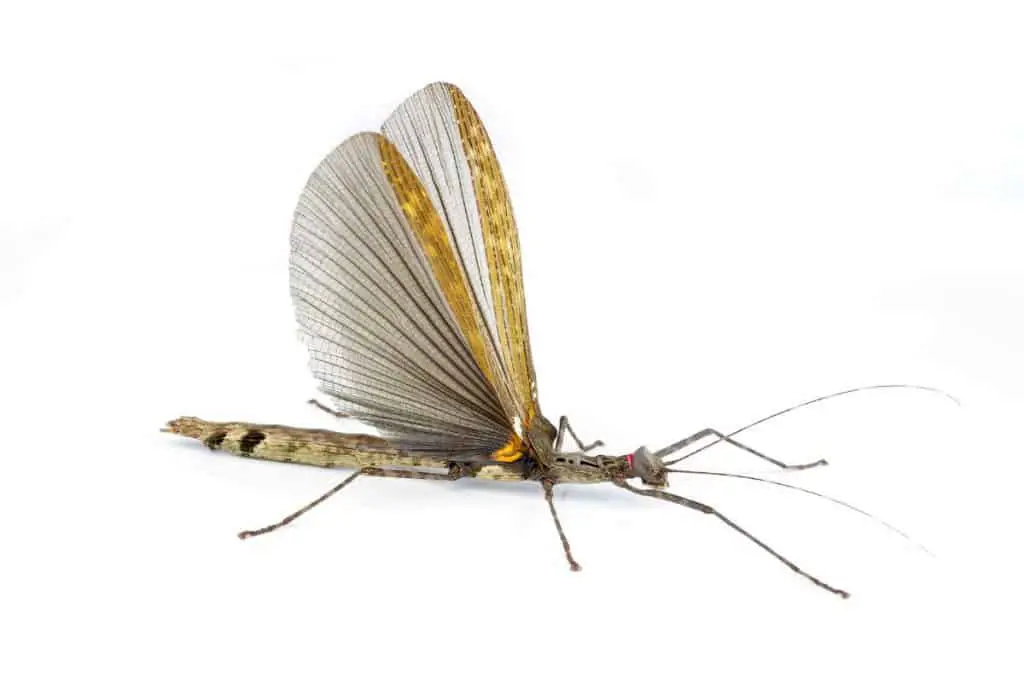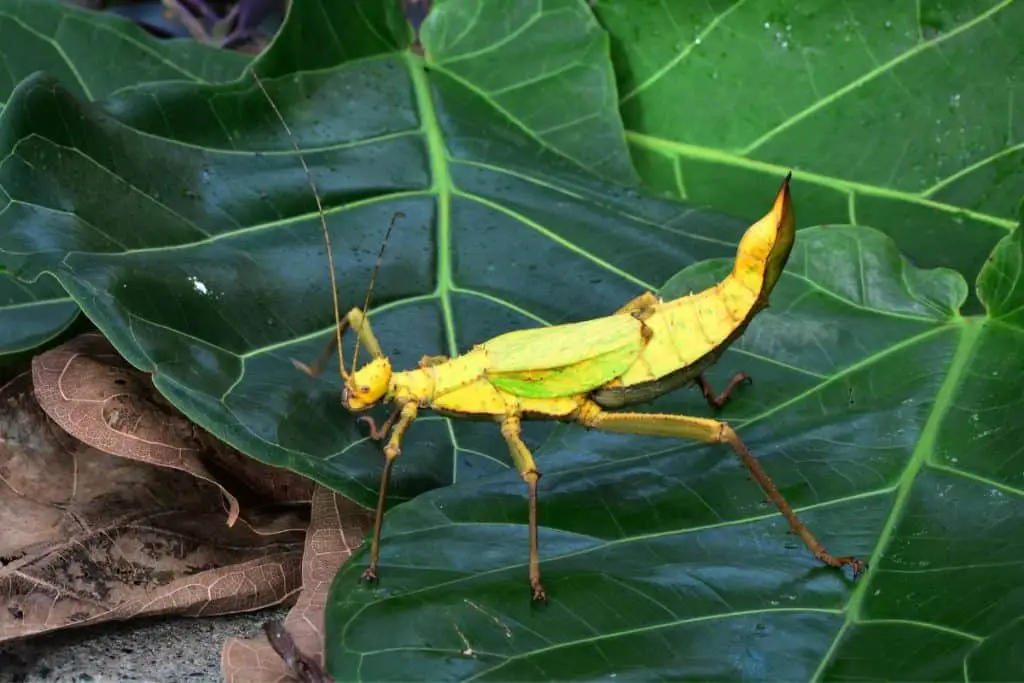Can Stick Insects Fly? There are more than 3,000 species of stick insects on the plant and most of them vary in size and shape! Some species are long and thin like twigs, while others are short and fat!
But, about wings? do stick insects actually have wings? and if so, can they fly?
Yes! Some stick insects do have wings “but” most don’t use them for flying! Instead, they are used as a type of camouflage to mimic leaves, or as a defense mechanism to warn off predators.
However, the stick insects that can fly are usually limited and only take off to escape danger or when searching for a mate.
Do All Stick Insects Have The Ability To Fly?
It’s widely known that certain species of insects, such as stick and leaf insects, are able to produce wings, though this certainly isn’t true of every type or even family of stick insect.
Of the three thousand species of Phasmatodea also known as Phasmatoptera, Phasmids, or Spectra, (stick insects) that currently exist in the world, approximately only forty percent are fully winged individuals!
Delineating between genders within these species, it’s often the males who display wings – yet not always, some species of females also possess them.
To give you an idea of the types of stick insects that can fly, here’s a list of some species:
- Jungle nymph
- Asceles Tanabata
- Goliath stick insect
- Pink wing stick insect
- Pseudophasma rufipes
- Giant prickly stick insect
- Yellow flying stick insect
- Javanese lichen stick insect

Phasmids Body, Wing Size, And Weight
“Phasmids” can be quite astonishing in size and weight compared to their insect counterparts. In some cases though, their size is nothing short of remarkable!
Body Size
- They can range from a mere 1.5 centimeters (0.6 in) in length to over 63 centimeters (25 in) long – that’s bigger than some small rodents!
- The longest insect species in the world hail from the genus Phryganistria and can measure up to 64 centimeters (25 in) long when stretched out all its legs!
Wing Size
Winged stick insects tend to have long thoraxes which house their flight muscles – a primary feature for increased mobility in those species with wings.
Although appearing fragile, the wings of “phasmids” possess a unique venation distinguishing them from other insect species.
- The first pair being narrow and hardened while the back pair being broader with distinct straight veins along the length and multiple cross-veins.
- The size of their wings can vary depending on the species, however, most Phasmid wingspans range from (2 to 6 in).
Larger-type wings are especially useful for scaring off predators which is a defense mechanism often used by stick insects.
Weight
- Interestingly, the heaviest phasmid species is thought to be Heteropteryx Dilatata, where certain females weigh as much as 65 g (2.3 oz).
- The females are very large, and bright green in color compared to their counterparts! However, their wings are really short “only half the size of their body” yet the male’s wings are much longer and extend all the way down their abdomen.
Such distinct features serve to increase their adaptability amongst a range of terrains, climates, and even predators in order to ensure maximum survivability in any given landscape.
Related Article:

How Far Can Stick Insects Fly?
Stick insects that are able to fly typically do so in short bursts over relatively small distances.
The average flight distance for these species is usually no more than 10 feet (3 meters), though it can vary depending on the species and environment.
When they do take flight, some species hitch a ride using air currents or even use gliding as a parachute method to get from one area to another.
In addition, their wingspans range from 2 to 6 inches (5-15 cm) which limits their capacity for mobility significantly.
For example, if the wind isn’t strong enough, it may not be possible for them to take off, or if the weather conditions are too harsh, they may encounter problems during take-off or landing.
Do Stick Insects Fly In Captivity?
Yes, stick insects can fly in captivity! but again, the ability to do so is greatly limited due to their size and habits.
Many stick insects are known to fly around in their natural habitats “but” when they’re placed in captivity, they tend to lose the need or ability to do so!
The reason for this is that they become accustomed to their enclosure and as a result, are less inclined to take flight as a means of escape or exploration.
Additionally, if the insect has been bred within an artificial environment it may have never learned how to fly at all.
Are Stick Insects Able To Regenerate Lost Or Broken Wings?
Many people wonder if stick insects are able to regrow lost limbs, yet it all depends on the age of the insect when the limb is lost.
Stick insects go through three stages of growth: egg, nymph, and adult. If a limb is shed in an insect’s adult stage, then it will not be able to regenerate that limb due to its incomplete metamorphosis process.
When a stick insect molts for the final time into its adult form, it becomes unable to grow back a lost or broken wing!
However, nymphs have some ability to regenerate appendages since they are unable to molt further which leads some experts to believe they may be able to regrow limbs under specific conditions
Ultimately it will depend on what stage of development the stick insect is in at the time when the wings were lost.
Conclusion
To summarise, some stick insects do have wings and are able to fly but only for short distances! However as before, many don’t possess any wings, and the ones that do it’s typically only the males that fly.
